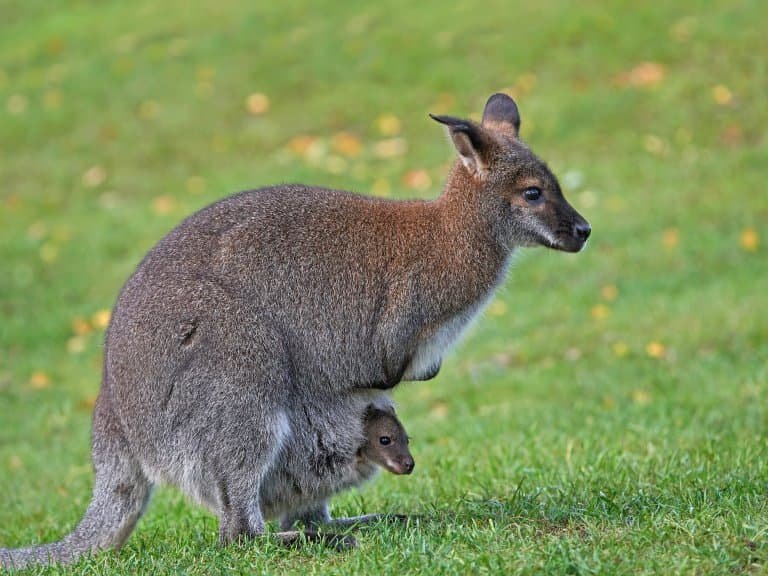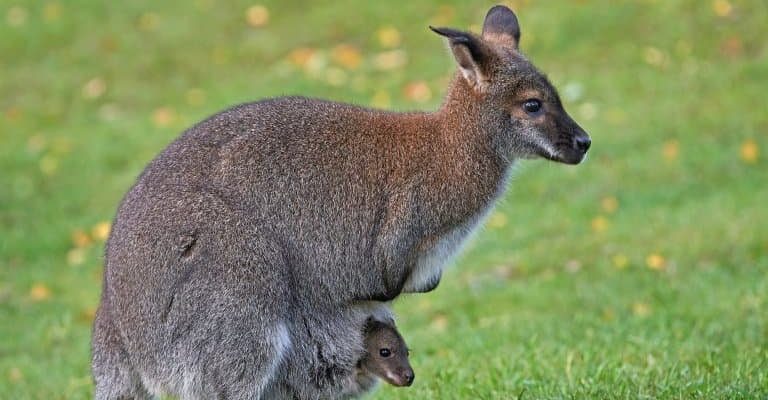
Wallabies come in various shapes and sizes, with distinct personalities that make them captivating to observe. They’re not just cute; they play important roles in their ecosystems. If you’re someone who’s curious about wildlife or simply wants to know more about these fascinating creatures, I’ve got you covered. Let’s dive into some of the most fascinating facts about wallabies that will make you appreciate these remarkable animals even more.
1. Wallabies Are Marsupials
You might be wondering what exactly a marsupial is. Simply put, marsupials are a group of mammals that typically carry and nurse their young in pouches. This means that wallabies, like kangaroos and koalas, will carry their babies in a pouch while they grow. After birth, a wallaby joey—yes, that’s what baby wallabies are called—climbs into the pouch to continue developing for several months.
Here’s a fun mental image: picture a tiny joey clinging to its mother’s fur as it peeks out from the safety of the pouch, wide-eyed and curious about the world. This unique reproductive strategy helps ensure that baby wallabies have a safe environment to grow, allowing them to emerge when they are ready to face the outside world.
2. They Come in Different Species
Wallabies aren’t a one-size-fits-all type of animal. There are **over 30 species** of wallabies, each with its own unique traits and habitats. For instance, the **Red-necked Wallaby** is one of the most commonly seen species, often found near populated areas. They prefer open forests and grasslands where they can find plenty of food.
On the other hand, the more elusive **Swamp Wallaby** prefers thick bushes and dense vegetation. With their shaggy fur and shorter legs, swamp wallabies are ideal for navigating through dense underbrush. Next time you’re chatting about wildlife, you can impress your friends with the knowledge that wallabies come in different shapes, sizes, and living conditions!
3. They’re Mostly Herbivores
What do wallabies eat? Mostly plants! They are primarily herbivores, munching on a diet of grass, leaves, and tender shoots. In the wild, wallabies are known for their grazing habits, often feeding at dawn and dusk to avoid predators and the heat of the day. Imagine strolling through the fields, plucking tender greens while enjoying the fresh air—that’s a wallaby’s life!
Here’s a cool fact: wallabies have a specialized digestive system that helps them break down tough plant materials. This is important since their food can be hard to digest. Their unique stomach allows them to ferment their food, extracting the nutrients they need to thrive. Talk about an efficient eating machine!
4. Wallabies Are Great Hoppers
If you’ve ever seen a wallaby in motion, you know they can hop like pros! Their powerful hind legs are built for leaping, allowing them to cover large distances quickly. They can reach speeds up to **24 miles per hour** when they really get going, which helps them escape predators or just travel between food sources.
Think of a wallaby as a mini kangaroo with a similar style of movement. Their hopping is energy-efficient, allowing them to traverse vast open spaces with ease. They can also leap over obstacles that would stump many other animals. Their strong legs not only help them escape danger but also make them fantastic travelers in their natural habitat.
5. They Have Unique Social Structures
Wallabies are not solo creatures; they often live in small groups called mobs. These social structures help them stay safe and find food more efficiently. Within these groups, wallabies communicate through body language and sounds, like soft grunts or snorts. When you think about it, it’s like having a little community in the wild where everyone looks out for each other.
Interestingly, the dynamics within a mob can shift based on factors like age and dominance. Younger wallabies may follow older ones who lead the way to food sources, and this kind of teamwork is vital for their survival. Think of it as a little wallaby networking event, where they share information and support one another.
6. They’re Adaptable Creatures
Wallabies have an incredible knack for adapting to their environments. Whether it’s the rugged outback or lush forests, they can adjust their behavior and diet based on what’s available. For instance, some species are known to thrive in urban areas, finding food scraps and navigating through human activities.
This adaptability can also be seen in their breeding habits. In favorable conditions, a wallaby can breed year-round. However, if resources are scarce, they may delay reproduction until conditions improve. It’s like they have an internal radar that helps them gauge the best time to bring new life into the world.
7. They Have a Unique Way of Moving
One of the coolest things about wallabies is their *hopping style*. Unlike some other animals that run or walk, wallabies move in a distinct way—using their strong hind legs to propel themselves forward in a series of hops. This movement is not only efficient but also a key part of their identity as marsupials.
What’s more, wallabies can actually alternate their legs when they’re moving slowly, much like a four-legged animal. However, when they pick up speed, those powerful hind legs take over, allowing them to leap and bound across the landscape. It’s a fascinating way to move that helps conserve energy while still getting where they need to go.
8. They Have Special Feet Adapted for Hopping
If you take a closer look at a wallaby’s feet, you’ll notice something unique. They have large, elongated feet designed specifically for powerful jumps and landings. The structure allows them to absorb the shock of landing, making their hops smoother and less jarring. Imagine having built-in springs in your shoes—it’s kind of like that!
These adaptations not only help with their movement but also assist in foraging. Their feet are ideal for digging up roots or turning over leaves to find hidden snacks. So, when you think about how wallabies move and feed, it’s all intricately tied together!
9. Wallabies Play a Role in Their Ecosystem
Wallabies are more than just cute and cuddly; they play an essential role in their ecosystems. As herbivores, they help maintain plant communities by grazing. This grazing can promote the growth of new plants and help create diverse habitats for other species.
Additionally, wallabies often serve as prey for larger predators, contributing to the food chain. By being a part of this intricate web of life, they ensure that the balance in their environment stays intact. So next time you see a wallaby, remember—it’s not just hopping around for fun; it’s fulfilling its role in nature!
10. Wallabies Are Facing Threats in the Wild
Despite their incredible adaptability, wallabies face several threats today, primarily due to human activities. Habitat loss from urban development, agriculture, and climate change poses significant challenges. These factors can lead to decreased food availability and safety for wallabies, pushing them toward the brink of extinction.
Conservation efforts are underway to protect wallaby populations and their habitats. By creating protected areas and raising awareness, wildlife agencies strive to create a safe environment for these fascinating creatures. Supporting these initiatives can contribute to the survival of wallabies for generations to come.
In conclusion, wallabies are wonderfully unique animals bursting with character and charm. Understanding these fascinating facts about wallabies not only boosts your knowledge of wildlife but also helps foster a sense of appreciation for the natural world. The next time you see a wallaby, take a moment to admire its incredible attributes and the vital role it plays in the ecosystem. Who knew something so small could be so mighty?

